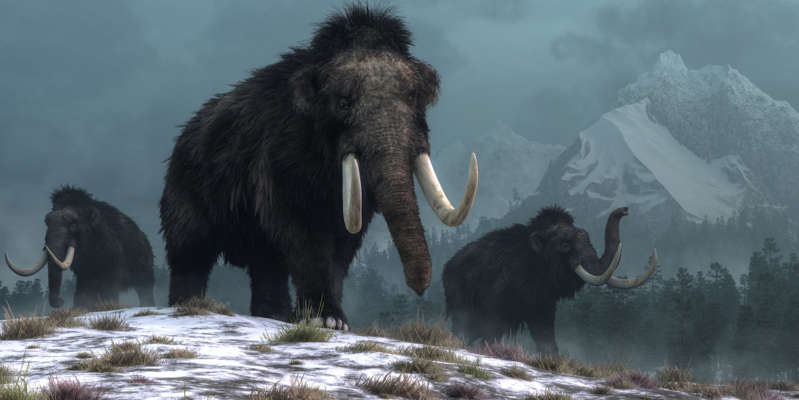
Ancient mammoths could have circled the globe twice
Scientists at the University of Alaska have reconstructed the biography of a woolly mammoth that lived in Alaska 17,000 years ago. It turned out that this animal moved very actively from place to place. For 28 years of life, the mammoth has traveled such a distance that it could circumnavigate the globe twice if it moved only in a straight line, Science reports.
Modern technologies provide unique information about the daily life of mammoths. The authors of the new study analyzed the genetic material from the tusk 1.7 meters long. The results indicated that it was a male who had spent his life traveling through the tundra. He was associated with the last groups of mammoths to inhabit the region.
The mammoth lived in Beringia, an area between North America and Northeast Asia. Now, most of it is covered with ice and flooded with sea water, but at the end of the Pleistocene there were vast meadows.
Scientists have studied the chemical isotopes in his remains. These data helped them understand which areas the mammoth visited in different years of life.
He spent the first year of his life in the Yukon River Basin in interior Alaska, moving very little. As a teenager (2-15 years old), he began to walk long distances.
At the age of 15, the mammoth's lifestyle changed dramatically, as evidenced by the isotope signatures in the tusks. Scientists came to the conclusion that he was expelled from the herd – about the same thing happens in modern elephants, when grown males separate from the group and begin to live on their own.
During this period of life, the mammoth made the most distant movements. He spent the last two years of his life in a small region in northern Alaska, where he died, most likely of starvation.
“The vast habitat of the continental mammoths of Beringia may have made them vulnerable to more stresses, from climate warming to human predation, which together could lead to a faster extinction,” the authors of the scientific work noted.
Scientists have previously recovered the oldest mammoth DNA in history. It was recovered from the remains of more than a million years old.

